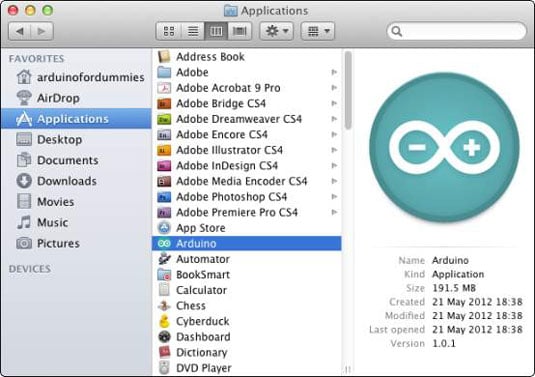Arduino Driver For Mac
When the Arduino Software (IDE) is properly installed you can go back to the Getting Started Home and choose your board from the list on the right of the page. Last revision 2016/08/09 by SM The text of the Arduino getting started guide is licensed under a Creative Commons Attribution-ShareAlike 3.0 License. Join Peggy Fisher for an in-depth discussion in this video Installing the Arduino software and drivers on a Macintosh computer, part of Learning Arduino: The Basics. Lynda.com is now LinkedIn Learning! - Let's get started with the download for the Mac.
You'll need to remove the brltty application if it exists on your system.
Make sure you have installed the FTDI drivers, chosen the correct board and serial port, and that your USB connection is secure. Step 5: Setting Your Preferences Arduino has many features and preferences to customize your experience. Before you get started, let's set a couple of the basic preference. Student discount for ms office. Open up your preferences menu: File -> Preferences Mac users will find their preferences under Arduino -> Preferences Now take a look at the settings tab: Preferences -> Settings There is a column of checkboxes. We recommend checking 'Display line numbers' for easy debugging. There is also a default setting, 'Save when verifying or uploading'.
Windows The RobotGeek Tools and Libraries Download offers a variety of sketches and libraries for working with RobotGeek Robot Kits. First download the. In this.zip file, there will be two folders • libraries-this folder contains libraries that will add functionality to your Arduino. • RobotGeek Sketches-this folder contains behavioral code for robots, as well as tools for testing.
Support System: OSX 10.9 and above Installation Process: * Extract the contents of the zip file to a local installation directory * Double-click CH34x_Install.pkg * Install according to the installation on procedure * Restart after finishing installing After the installation is completed, you will find serial device in the device list(/dev/tty.wchusbserial*), and you can access it by serial tools. If you can’t find the serial port then you can follow the steps below: • Open terminal and type ‘ls /dev/tty*’ ande see is there device like tty.wchusbserial; • Open ‘System Report’->Hardware->USB, on the right side “USB Device Tree” there will be device named “Vendor-Specific Device” and check if the Current is normal. If the steps upper don’t work at all, please try to install the package again. Note: Please enter System Preferences ➜ Security & Privacy ➜ General, below the title 'Allow apps downloaded from:' you should choose the choice 2 ➜ 'Mac App Store and identified developers' so that our driver will work normally. Older Driver This older version requires some hacking in order to get it to work.

It can show numbers with 0-3 decimal digits or rolling text. Double click on it to choose to show text or change the precision - LED Widget: shows a LED that can be turned on and off through digital values from Arduino. Double click on a Led Widget to change LED color - Switch Widget: sets a digital value to Arduino - Switch & LED Widget: a combination of the two previous widgets to save space when they are used together with the same variable - Push Button Widget: temporarily sets a digital value to Arduino. Double click on it to change the button color - Knob Widget: sets a non-digital value to Arduino - SD Widget: shows the list of files in the SD Card. Selecting a file, user can see the file content or save the file on the Mac.
We reccomend that Mac users skip driver installation, and move on to step 3. If you have problems with uploading to your geekduino, come back to this step. Mac users can also watch the for a more in-depth analysis. If you're using Mac OS 10.11 El Capitan, then the default Apple FTDI drivers should work for you without any problems.
Gentlemen, after having installed the drivers still a no go fro me. So what I did is: – csrutil thing is disabled on my El Capitan – my chinese OSOYOO Arduino Nano has a 340G usb chip – i’ve tried installing the older CH341_SER and the newer CH34X_ drivers with no success – if from the terminal I list all devices in /dev there is no new device, nor from Arduino IDE. – if i try from the system report and see how my USB tree changes when I plug/unplug the USB, although my nano shows to be powered on, no unidentified USB devices show connected. Not working with mac ox (version 10.7.5). I try 20 times.